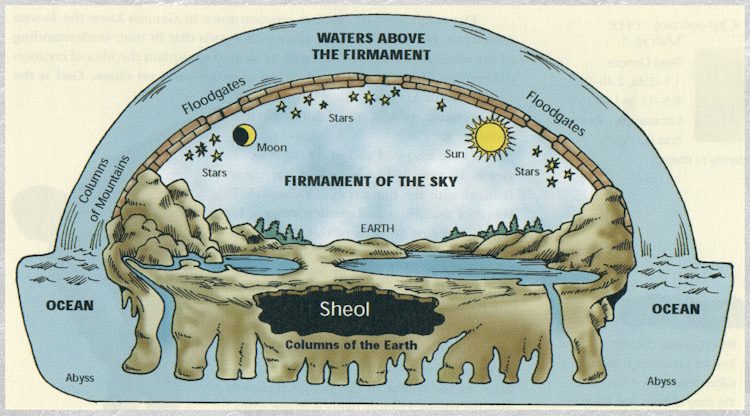“Third Way” people are mean. And they’re proud of it.
I’m speaking arithmetically, which is how these folks seem to approach the world. Take any two sides of a dispute, add them together and divide by two. That’s the average, the mean, and that’s your “Third Way.”
That’s an elegant approach to answering all questions and resolving all disputes. Provided, that is, that every dispute involves two and only two sides, each of which is wrong in precisely equal measure.
I can’t think of any non-mathematical examples of such a dispute between perfectly binary equivalents,* but I suppose it’s possible that there might be some. And in those cases, I suppose, the “Third Way” ideology might be something other than an odious exercise in self-congratulation and a refusal to listen or learn.
But most of life isn’t like that. Most of the time we don’t find ourselves uniquely positioned to ascertain the truth about which everyone around us is obviously and equally wrong.
Most of the time, when someone invokes a “Third Way,” they’re simply committing Hegel’s Bluff:
Simply find two extreme views roughly equidistant from your own along whatever spectrum you see fit to consult. Declare one the thesis and the other the antithesis, and your own position the synthesis. Without actually having to defend your own position, or to explain the shortcomings of these others, you can reassure yourself that you are right and they are wrong. Your position, whatever its actual merits, becomes not only the reasonable middle-ground and the presumably correct stance, but the very culmination of history.
Hegel’s Bluff is usually an exercise in self-reassurance. It’s a way of telling oneself that one is being reasonable. It works for that, well enough — well enough, that is, that Third Way-ers applying this bluff seem genuinely confused when others fail to perceive them as being as eminently reasonable as they perceive themselves.
But persuading others isn’t really what the Third Way of Hegel’s Bluff is designed to do. It rarely persuades. It fails to offer a persuasive argument mainly because it fails to offer any argument at all. That’s not really what it’s for. Arguments are made in support of particular conclusions, but this bluffery is more about just trying to reach that state in which any given dispute is concluded. That’s what it values most — that the unsettling argument be settled, not that it be resolved. It’s more about conflict-avoidance than about conflict resolution.
Having said all of that, please don’t misunderstand me as saying that no truth can ever be found “somewhere in the middle.”**
I’m sure some truth can be found there, even when this “middle” is carefully undefined (the middle of what?) and even when it is defined in the most self-serving manner possible (as in Hegel’s Bluff). Sometimes, the truth — or, more humbly, a better approximation of truth — can indeed be found in “the middle,” but that is not because it is in the middle. It’s location in some actual or imagined “middle” is not what makes it true.

– – – – – – – – – – – –
* Mathematical examples are easy. Side 1 says that 2+2=5. Side 2 says that 2+2=3. The Third Way proposes, instead, that we seek a reasonable compromise and conclude that 2+2=4.
That arrives at the correct answer, but it does so for the wrong reasons. It cannot know why that correct answer is actually correct other than that it is equidistant between two alternative answers that coincidentally and conveniently just happen to both be wrong to precisely the same extent. Radicalize either of the incorrect views even slightly — Side 1 says that 2+2=5.1 — and this arbitrary formula will produce an incorrect result which the Third Way devotee will have to accept and affirm. They will assert that “2+2=4.05,” without having any way of knowing why this is wrong or even of knowing that it could be wrong.
This is why Third Way-ers can be so easily manipulated by rhetorical “Overton’s Window” games.
This formulaic mathematical approach also helps to understand why it is that Third Way types never seem to fully comprehend either of the antithetical sides to which their Third Way is the culmination of Truth and History. Both of those “sides” — and they’ll only allow for the existence of two, remember — must be revalued in order for the formula to work. That formula works backwards from its purported conclusion, X: X = (a + b)/2.
Reconstituting the two (and only two) sides of any dispute so that their value can be rendered as precisely “a” and “b” tends to involve a great deal of rounding down or rounding up or caricaturing or misrepresenting.
** Here is an odd thing that distinguishes “Third Way” devotees from everyone else: When they arrive at the middle, they conclude that they have arrived. That’s not really how these spatial metaphors work. If we redefine “the middle” as our end-point destination, then it’s not actually the middle, is it? That would shift the true middle to some prior mid-point between that final “middle” and wherever it was one started. We thus wind up creating a kind of Zeno’s Paradox, with an infinite number of middles and, thus, an infinite number of Third Ways.
















